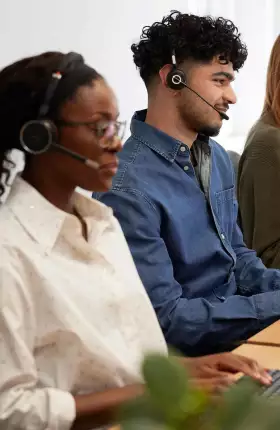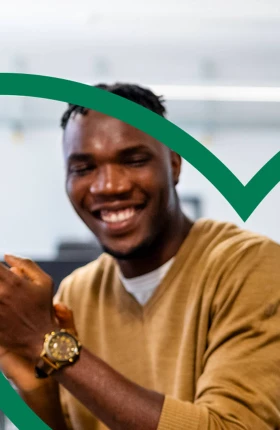In response to recent events, the corporate world faces a reckoning. The global outcry over the murders of George Floyd, Breonna Taylor and other Black Americans has pushed business leaders to do more to acknowledge and confront systemic racism and bias against all under-represented groups in their organizations. This same reckoning is taking place in Canada, as we face these same systemic biases. The COVID-19 pandemic and its economic fallout, which have disproportionately harmed women and racialized minorities, only add to the pressure to make meaningful changes. Without targeted actions focused on workplace diversity, equity and inclusion (DEI), the pandemic will result in a profound step backward in representation and equity for minority groups in corporate Canada.
Strong policies and programs that support DEI across the career lifecycle, from recruitment to retention and advancement, are critical to dismantling these systemic challenges. But, BCG’s research shows that in addition to these structural programs, a culture of allyship is required to foster inclusion. A study of over 5,000 Canadians finds that women, the LGBTQ2+ community, and Black, Indigenous, and People of Colour (BIPOC) employees who have allies at work are 1.6 times less likely to perceive obstacles in their day-to-day environment and twice as likely to say their workplace is bias-free (see Exhibit 1). However, less than 50% of under-represented groups in Canada say they have allies at work.
All employees need to play an active role to change this and foster an ally culture. Here’s how.
Putting allyship into action
An ally is someone who actively questions, rejects, and combats exclusionary ideology and works against oppression. Allies support and advocate for populations and communities of which they are not a part, using their power and privilege to uplift others.
To approach allyship purposefully in the workplace, employees and leaders should consider the following questions.
What obstacles exist in my workplace for under-represented colleagues? How can I help remove them?
Under-represented groups often face overt and subtle biases and obstacles. They may be left out of meetings, not considered for stretch assignments or talked over in discussions. Allies look out for these barriers and intervene in positive ways. They advocate for greater inclusion in teams, discussions and projects, and look for opportunities to sponsor and mentor under-represented individuals.
How am I educating myself and engaging to become a better ally?
It’s not up to under-represented groups, who are already navigating the structural biases within their organizations, to educate colleagues on the DEI challenges they face. Everyone must take on that responsibility themselves by participating in or organizing trainings and programming, reading on a breadth of issues and engaging colleagues in dialogue. Colleagues should also hold each other accountable in a constructive way, recognizing that everyone is on a learning curve.
What behaviours can I demonstrate publicly to foster an ally culture at my organization?
By demonstrating allyship publicly, individuals set an example, educate others and contribute to an ally culture where these inclusive behaviours become the norm. For example, research shows that public actions are particularly valued by LGBTQ2+ colleagues because they signal a commitment to inclusivity. Examples of these actions include participating in events in honour of different groups, using inclusive language and calling out non-inclusive behaviour whether that is overt prejudice or subtle microaggressions.
Whose voices are not represented at our organization today, and how can I start to create a culture that allows these voices to thrive?
Being an ally also requires that individuals consider who is missing from their workforce and take steps to create broader inclusivity. For example, displaying pronouns to show inclusiveness to potential transgender or gender non-conforming (GNC) colleagues and making your workplace accessible (physical, cognitive disabilities, etc.) helps foster inclusive behaviours amongst your workforce for these groups, even if representation of these groups is low or unknown.
Company leaders, due to their influence and visibility, are uniquely positioned to role model behaviours, enable an inclusive environment and make space for dialogue and programming. Line managers also play a critical role in ensuring that the day-to-day experience for their team members is free of bias and that systemic challenges are called out and addressed.
Start and others will follow
At BCG, we’ve been on our own journey to foster a culture of inclusivity and allyship. For many years we have had leadership and efforts in place to understand barriers and address inequities. But recently we’ve amplified those efforts by focusing on enabling all colleagues to become allies. Initially, we focused on supporting female and LGBTQ2+ colleagues, efforts that sparked a grassroots movement by employees. In 2018 and 2020, we formally launched ally networks in support of Women@BCG and Pride@BCG. Our ally networks partnered with our women and LGBTQ2+ communities to help organize and generate excitement for important programs like recognizing International Women’s Day, and National Coming Out Day. We have since launched Inclusion Accelerators, local volunteer groups of employees that organize cultural and awareness-focused initiatives. This year, we launched a Racial Justice Allies network, and a Racial Equity engagement series across North America so employees could learn about the experiences of Black and Latinx colleagues at BCG and beyond. What we’ve learned is that the more we show commitment to allyship culture from the top, the more employees step up.
Allyship is a journey. It takes humility, continual learning and the courage to proactively create a better workplace for all colleagues. Growth doesn’t happen overnight. It comes from a daily commitment to habituate new inclusive behaviours and actions. Along the way, we will all make mistakes. We need to embrace the discomfort of feeling unsure and use that discomfort to dig in deeper and help others improve along the way. In doing so, we foster an ally culture of collective learning and accountability.








